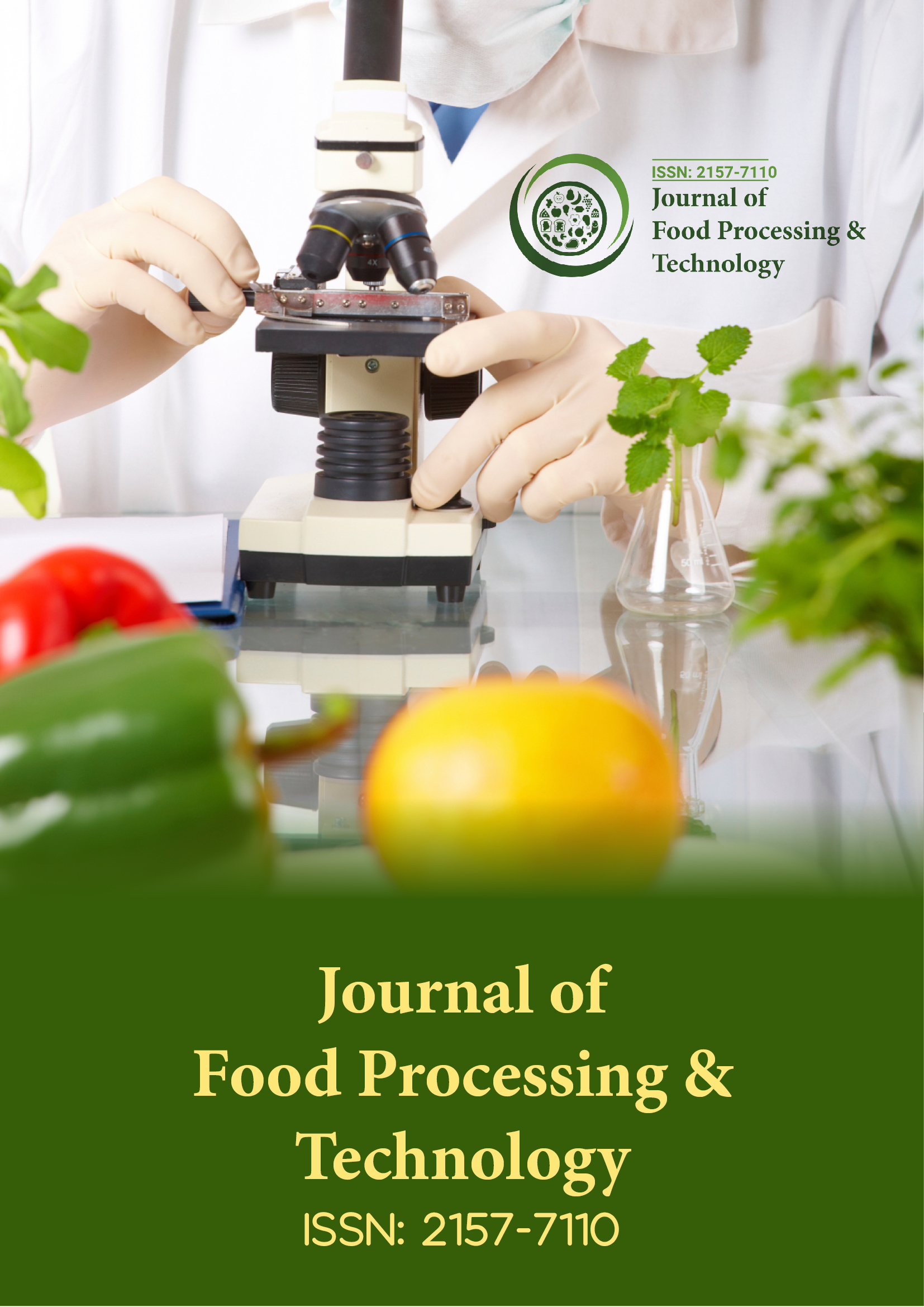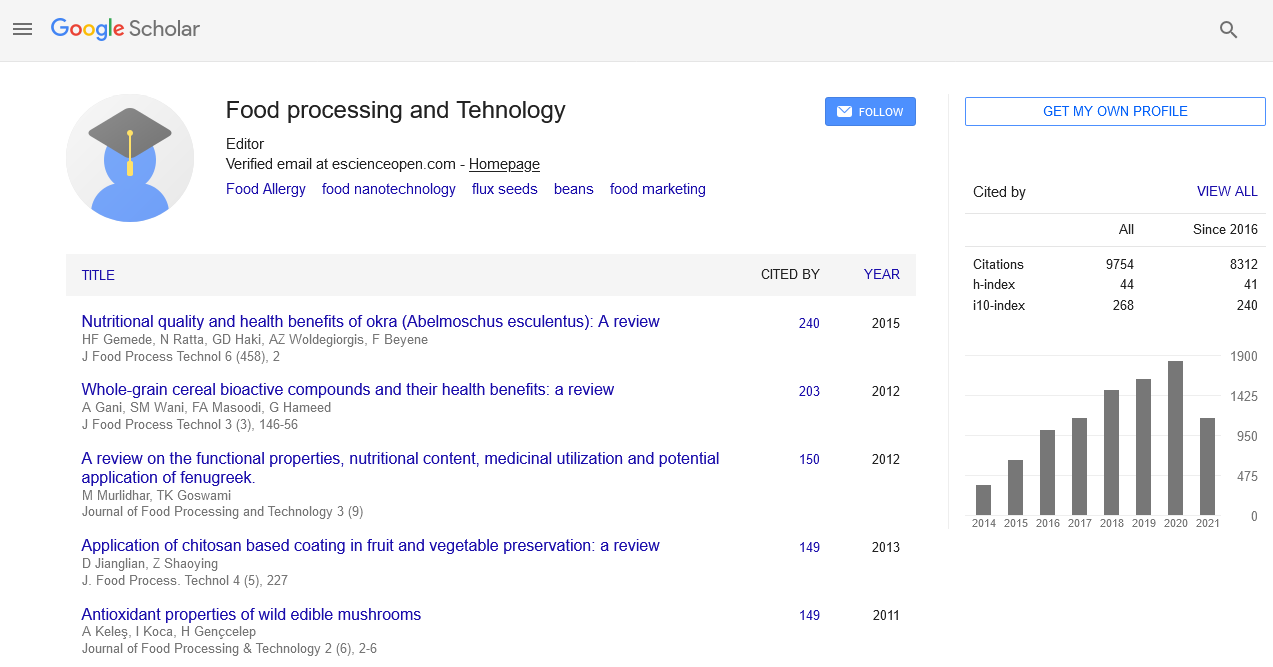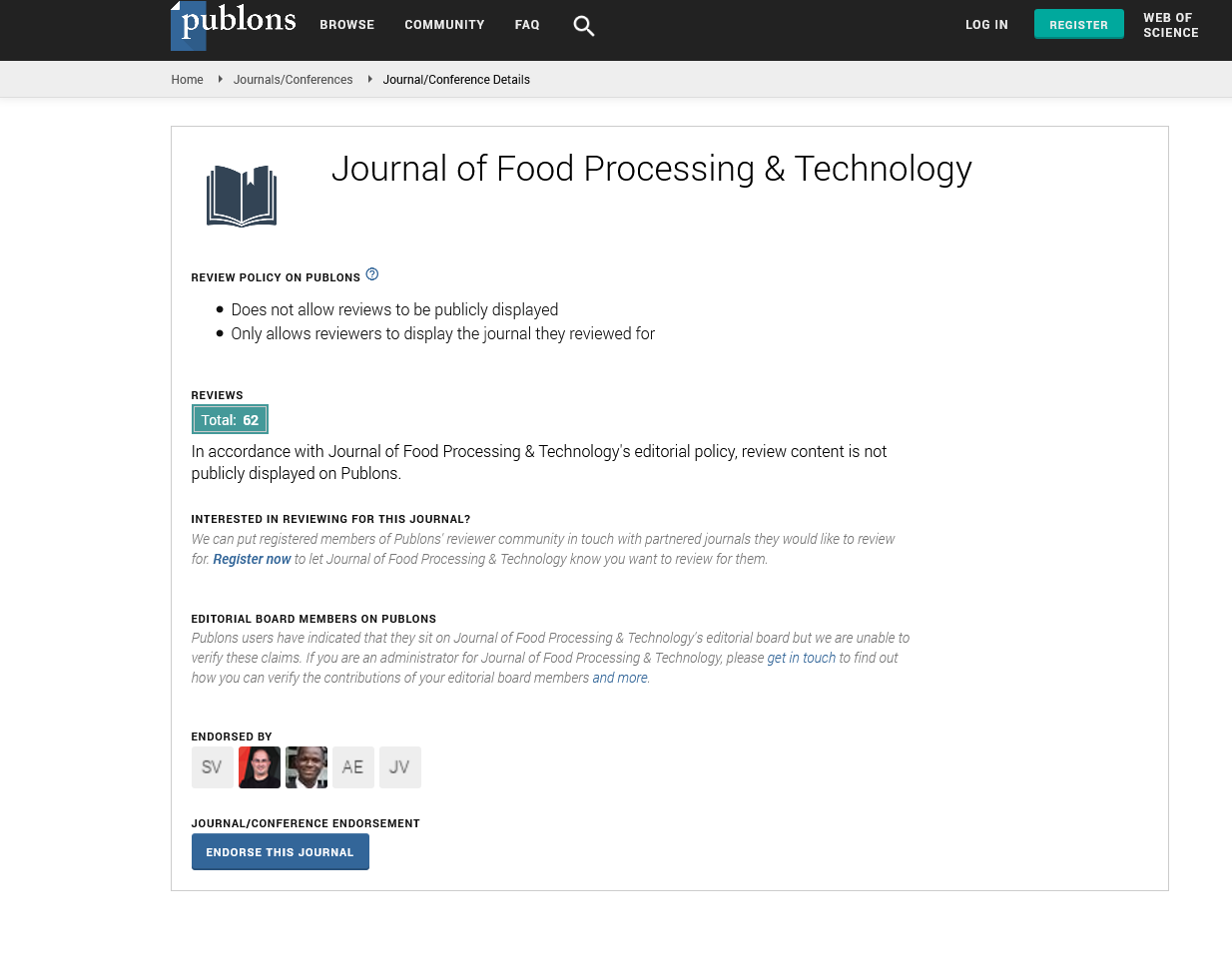Indexed In
- Genamics JournalSeek
- Academic Keys
- JournalTOCs
- China National Knowledge Infrastructure (CNKI)
- Access to Global Online Research in Agriculture (AGORA)
- Centre for Agriculture and Biosciences International (CABI)
- RefSeek
- Directory of Research Journal Indexing (DRJI)
- Hamdard University
- EBSCO A-Z
- OCLC- WorldCat
- Scholarsteer
- SWB online catalog
- Publons
- Euro Pub
- Google Scholar
Useful Links
Share This Page
Journal Flyer

Open Access Journals
- Agri and Aquaculture
- Biochemistry
- Bioinformatics & Systems Biology
- Business & Management
- Chemistry
- Clinical Sciences
- Engineering
- Food & Nutrition
- General Science
- Genetics & Molecular Biology
- Immunology & Microbiology
- Medical Sciences
- Neuroscience & Psychology
- Nursing & Health Care
- Pharmaceutical Sciences
Study of antioxidant potential and functional properties of amla (Emblica officianalis) pomace for functional food product development
19th International Conference on Food Processing & Technology
October 23-25, 2017 | Paris, France
Ajay Patel, S N Naik and Santosh Satya
Indian Institute of Technology, Delhi, India
Scientific Tracks Abstracts: J Food Process Technol
Abstract:
Indian Gooseberry or amla (Emblica Officinalis), is also known as anola, amalakki, or nelliis. It is a wonder fruit for health because of its unique properties. The fruit, being the richest source of vitamin C 445 mg/100 g, demonstrates a very high antioxidant activity. The main objective of the study is to scientifically utilize the amla pomace (AP) for functional food product development. A literature review revealed that amla pomace has great medicinal value, which can be used to prepare nutraceuticals/functional food, in this context antioxidant and functional properties have been studied. Amla pomace was collected from Amla juice extraction industry. The amla pomace was dried by using three different techniques freeze, sun and oven drying. Dried AP powder was taken to study functional properties and to extract phytochemicals. Freeze dried AP extract shows the higher antioxidant property as compared to oven and sun-dried. Also, Water holding capacity (WHC), swelling capacity (SC), oil holding capacity (OHC), bulk, hydrated and packed density of freeze-dried (AP) is found significantly more as compared to oven and sun-dried (AP) powder. Water removal at low temperature creates porous structures within the cell wall matrix, which enables easy and complete rehydration, thus showing higher SC in freeze-dried powder. BD of oven dried AP is more this is because of high shrinkage of cells at elevated temperature.
Biography :
Ajay Patel is a Research Scholar in IIT Delhi working under Professor S N Naik. He has completed his Master’s degree in Food Process Engineering from IIT Kharagpur. His research area is utilization of industrial food waste to improve the economy of industries.


